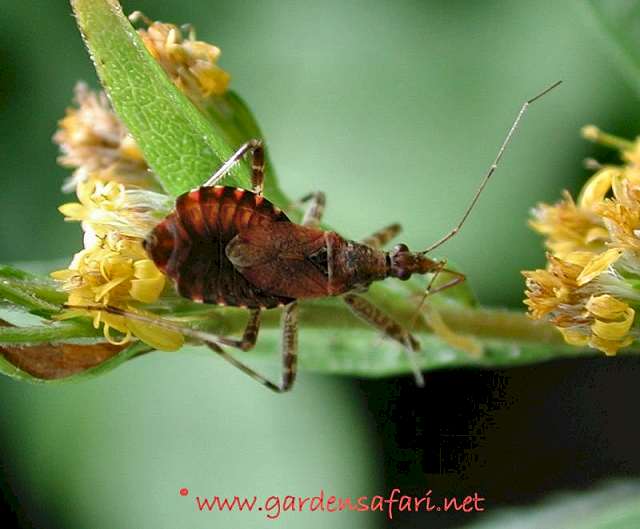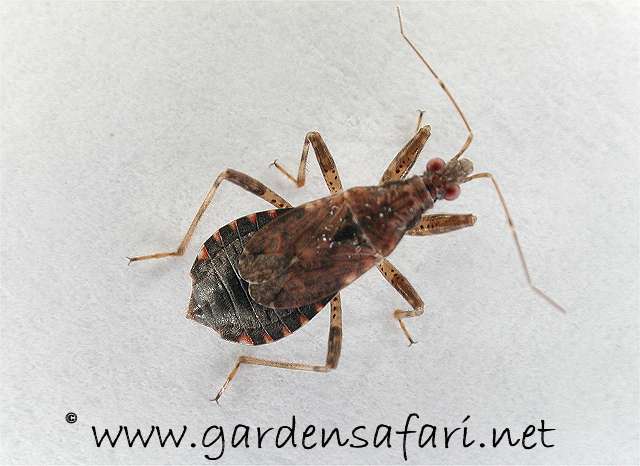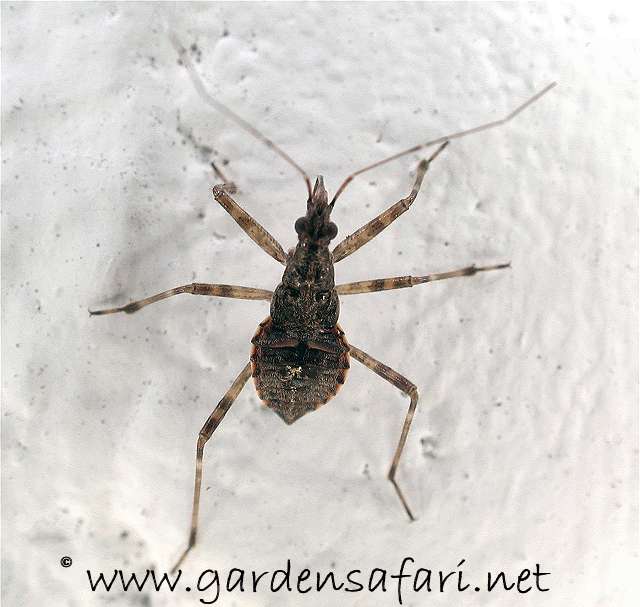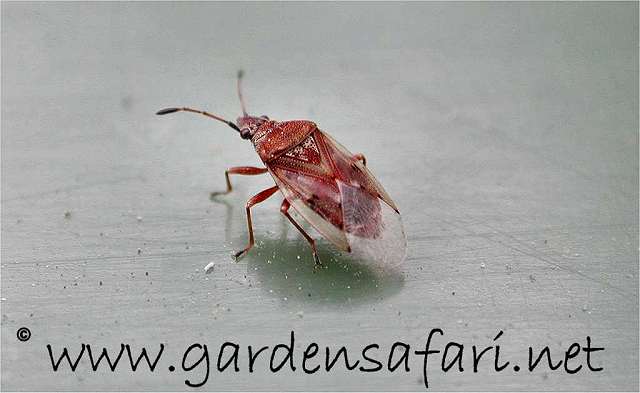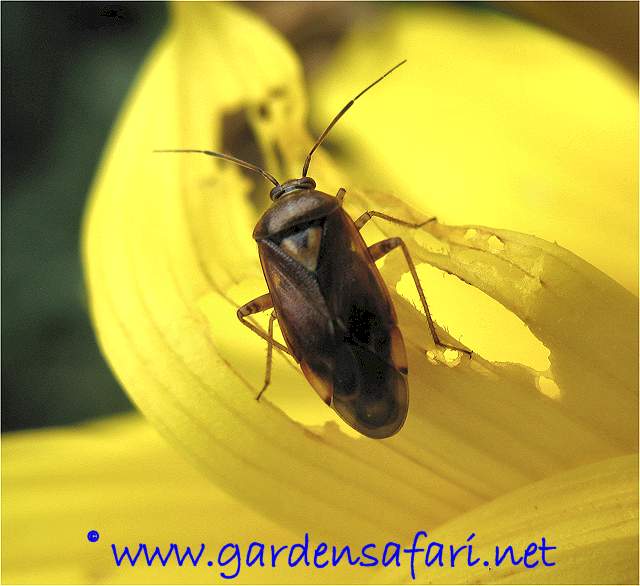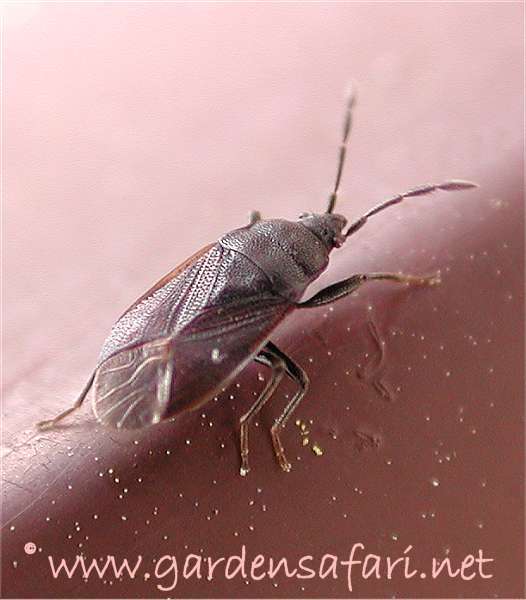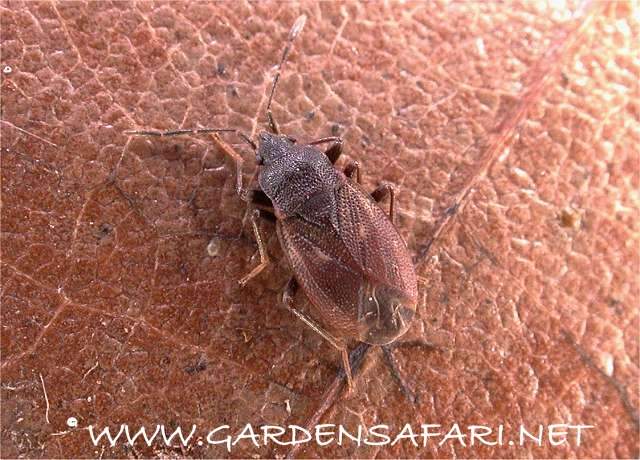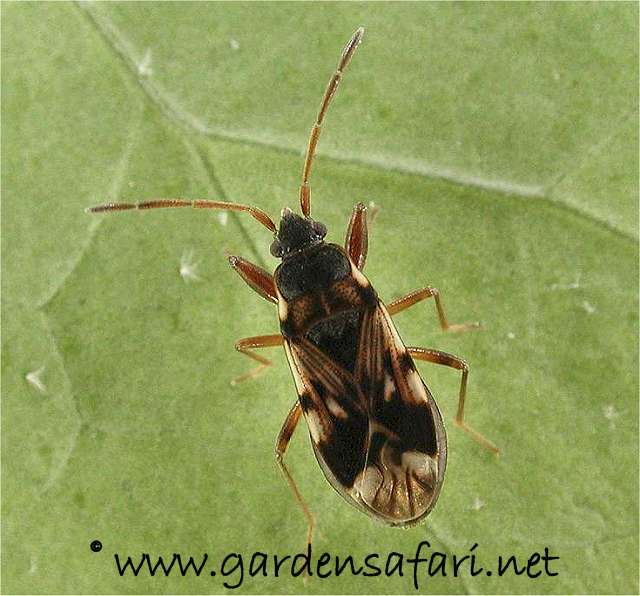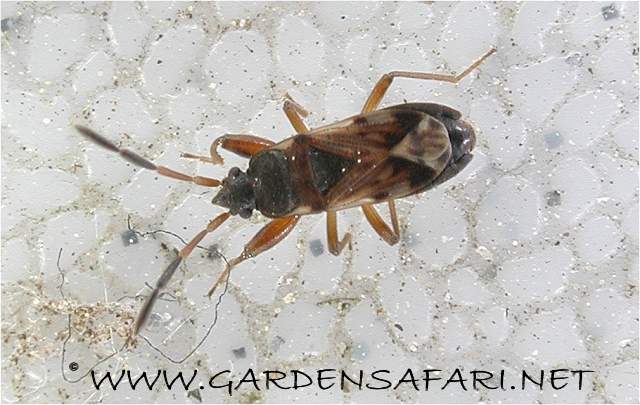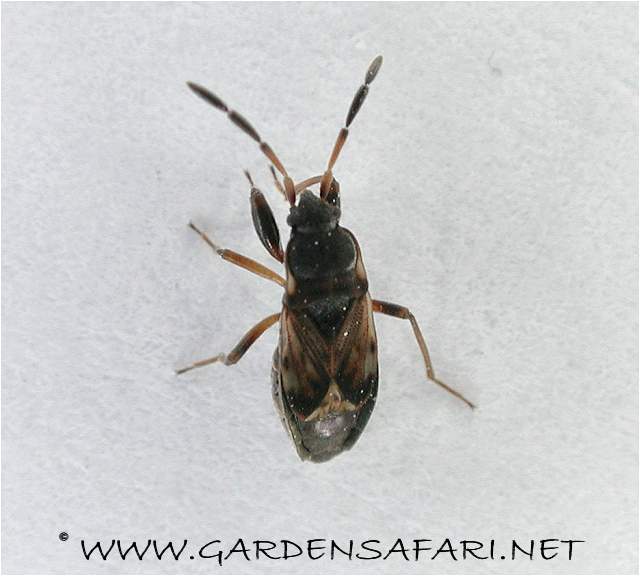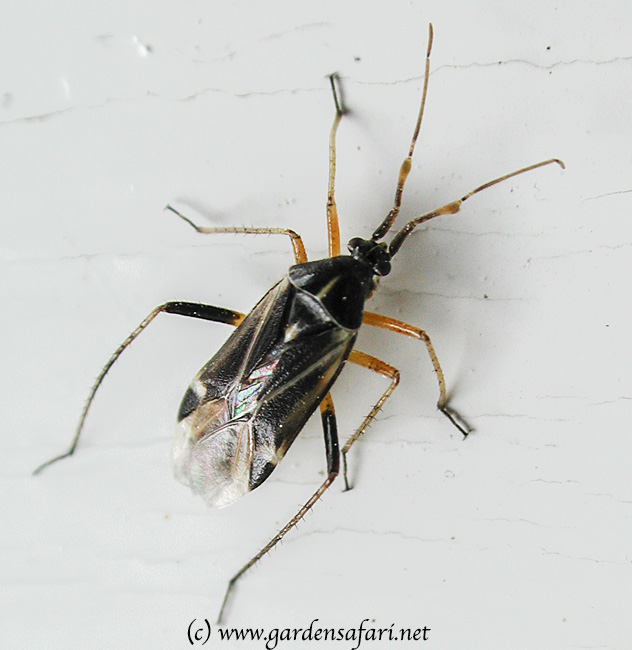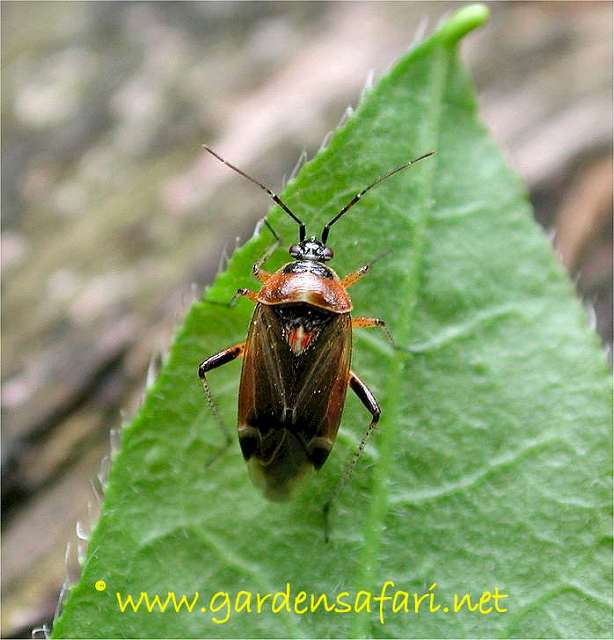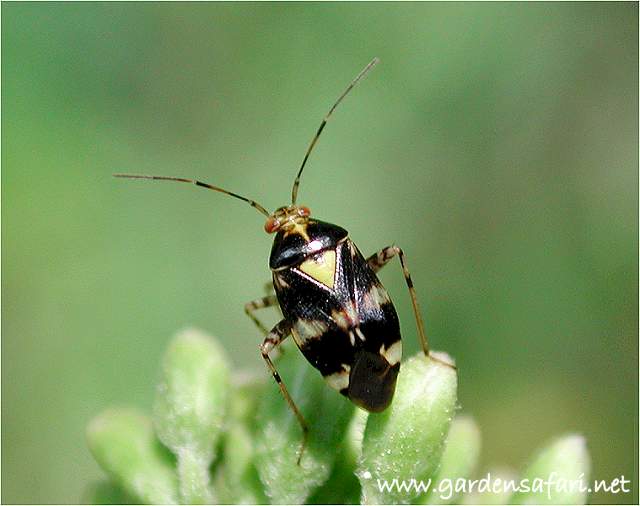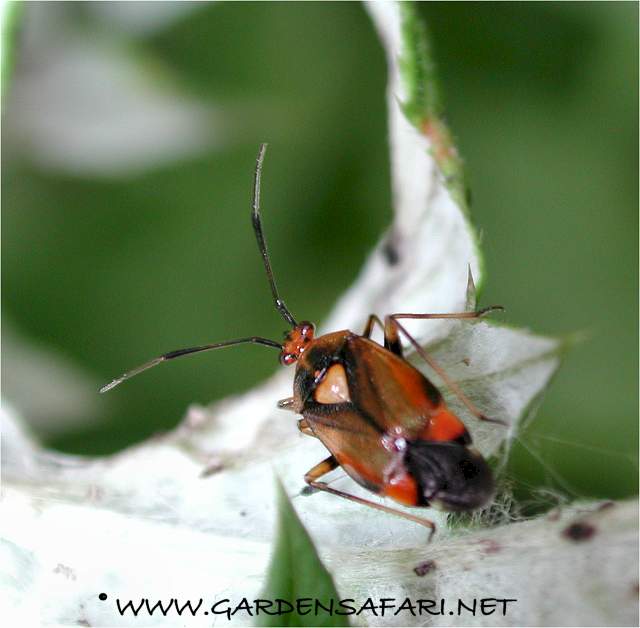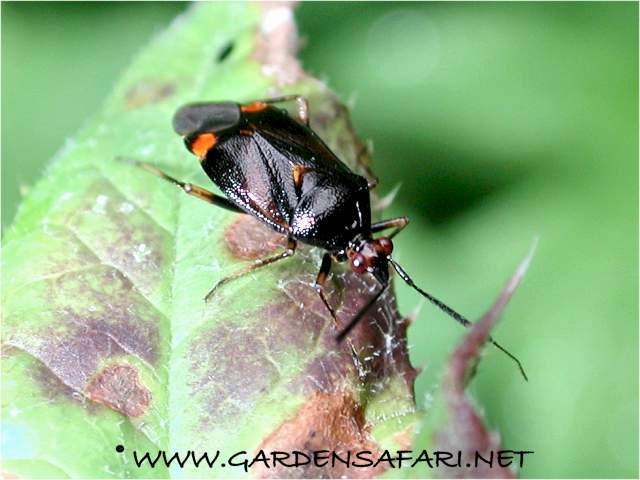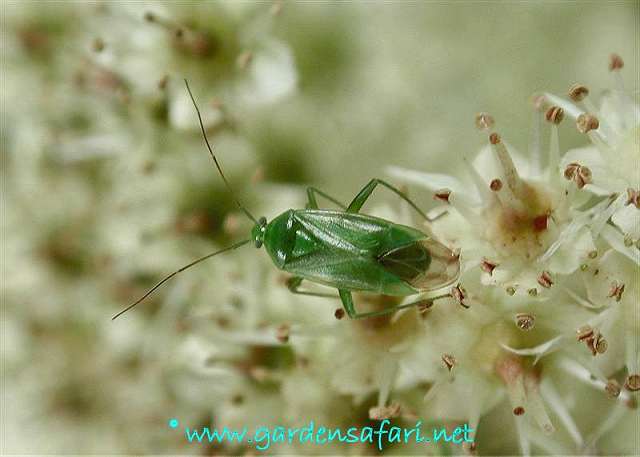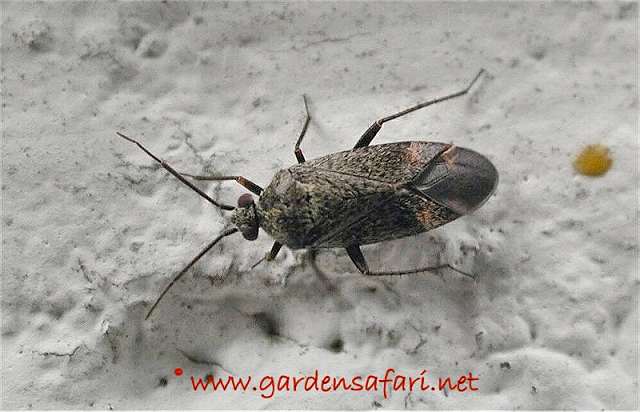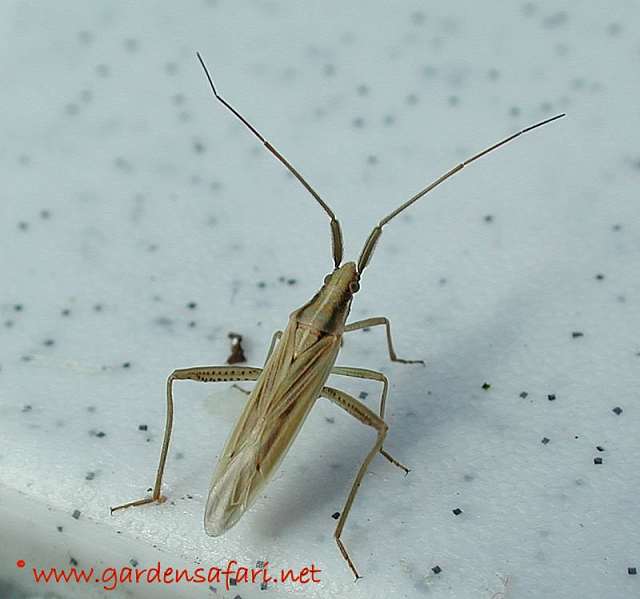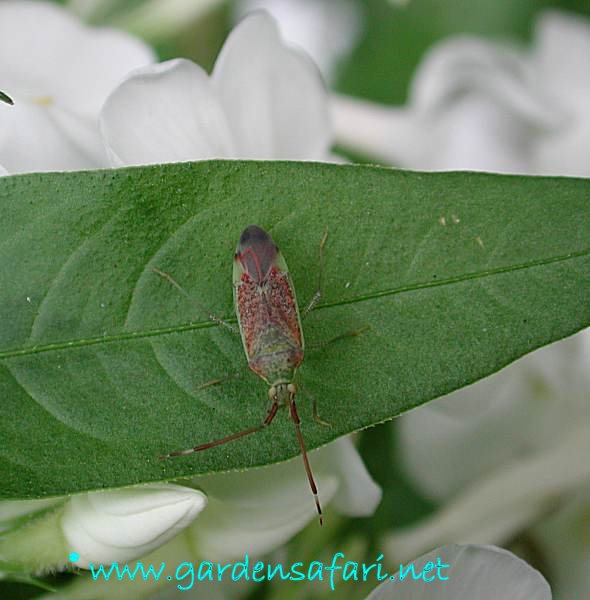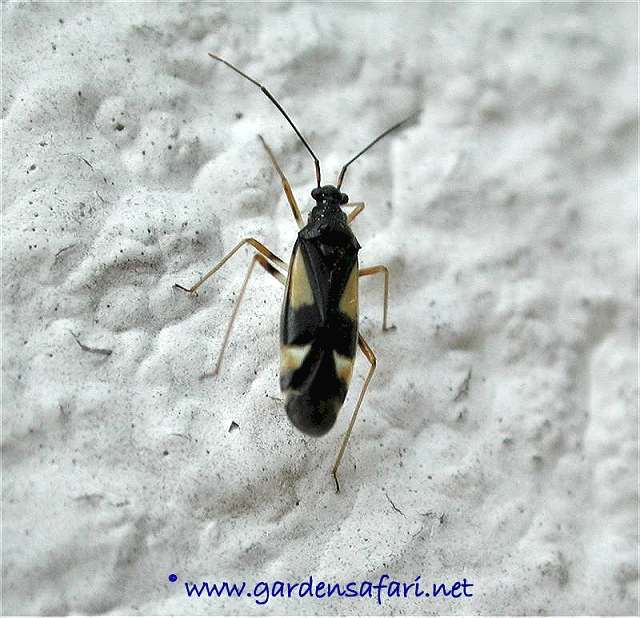Stictopleurus punctatonervosus
Stictopleurus punctatonervosus
Stictopleurus punctatonervosus
Stictopleurus punctatonervosus
Family: Scentless Plant Bugs (Rhopalidae)
Stictopleurus abutilon and its brother Stictopleurus punctatonervosus are rapidly reappearing in much of Britain. The two species are extremely similar though. To tell them apart, you should look at the combination of these characteristics. Stictopleurus abutilon has a brownish ground colour, sometimes yellowish brown. Stictopleurus punctatonervosus is always greyish to even blackish, but lacks the "warmth" in colouring of its brother. The tip of the scutellum is round and broad in Stictopleurus abutilon. It is round and slim in Stictopleurus punctatonervosus. The neckshield of Stictopleurus punctatonervosus is entirely and regularly punctuated. There is a marking near the front edge. This marking consists of two half circles. There is a vague dark line between these half circles. The line is interrupted in the middle. It looks like Stictopleurus punctatonervosus is wearing a pair of reading glasses. The neck shield of Stictopleurus abutilon is not punctuated as deeply and as regularly. It too has a marking near the front of the neck shield, consisting of two full circles. As these circles are connected by a small dark line too and this line is also interupted in the middle, it rather looks like Stictopleurus abutilon wears a pair of full sized spectacles. In well marked animals the presence of this full set of glasses is decisive. However many animals are less well marked, often resulting in the glasses being hardly visible or even absent. Be aware identifying Rhopalids on the continent, for more very similar species exist, such as Stictopleurus crassicornis. All species are some 6.6 to 8.5mm long.
In spring the adults are depositing their eggs. Larvae appear from June. They live on Thistles and many other plants. In August the first will turn adult. From mid-September to the end of October adults and larvae may be seen together in small mixed groups. By the end of October all adults have found a place for overwintering and have disappeared. In spring they reappear under good weather conditions. Now mating takes place. The larvae are similar to the adults.
Stictopleurus punctatonervosus once lived in two completely separated areas: Austria and Italy and parts of England. In England the numbers declined however and by the 1950's Stictopleurus punctatonervosus was believed to be extinct in Britain. The last species was reported in 1957(!). In the mid-1990's however it was suddenly rediscovered and in a few years it recolonized much of Southern and Eastern England. It still continues expanding northwards. Although it could be there has always been an undiscovered colony in England, it is rather safe to assume the species has been re-introduced in Britain by accident. This assumption is based an a similar sudden move northwards on the continent, where it reached the Netherlands and Denmark in the 1990's. Most blame the changing climate for this sudden reappearance, but the fact it did live in Britain before 1957 make this a mere speculation. Common through most of Central Europe. In Britain and on the continent still expanding northwards.
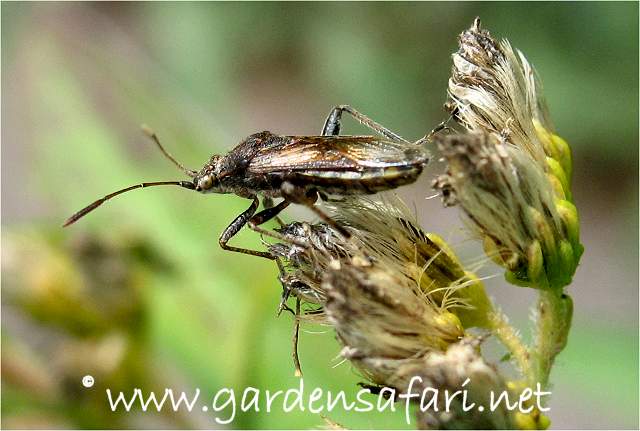
Family: Scentless Plant Bugs (Rhopalidae)
Stictopleurus abutilon and its brother Stictopleurus punctatonervosus are rapidly reappearing in much of Britain. The two species are extremely similar though. To tell them apart, you should look at the combination of these characteristics. Stictopleurus abutilon has a brownish ground colour, sometimes yellowish brown. Stictopleurus punctatonervosus is always greyish to even blackish, but lacks the "warmth" in colouring of its brother. The tip of the scutellum is round and broad in Stictopleurus abutilon. It is round and slim in Stictopleurus punctatonervosus. The neckshield of Stictopleurus punctatonervosus is entirely and regularly punctuated. There is a marking near the front edge. This marking consists of two half circles. There is a vague dark line between these half circles. The line is interrupted in the middle. It looks like Stictopleurus punctatonervosus is wearing a pair of reading glasses. The neck shield of Stictopleurus abutilon is not punctuated as deeply and as regularly. It too has a marking near the front of the neck shield, consisting of two full circles. As these circles are connected by a small dark line too and this line is also interupted in the middle, it rather looks like Stictopleurus abutilon wears a pair of full sized spectacles. In well marked animals the presence of this full set of glasses is decisive. However many animals are less well marked, often resulting in the glasses being hardly visible or even absent. Be aware identifying Rhopalids on the continent, for more very similar species exist, such as Stictopleurus crassicornis. All species are some 6.6 to 8.5mm long.
In spring the adults are depositing their eggs. Larvae appear from June. They live on Thistles and many other plants. In August the first will turn adult. From mid-September to the end of October adults and larvae may be seen together in small mixed groups. By the end of October all adults have found a place for overwintering and have disappeared. In spring they reappear under good weather conditions. Now mating takes place. The larvae are similar to the adults.
Stictopleurus punctatonervosus once lived in two completely separated areas: Austria and Italy and parts of England. In England the numbers declined however and by the 1950's Stictopleurus punctatonervosus was believed to be extinct in Britain. The last species was reported in 1957(!). In the mid-1990's however it was suddenly rediscovered and in a few years it recolonized much of Southern and Eastern England. It still continues expanding northwards. Although it could be there has always been an undiscovered colony in England, it is rather safe to assume the species has been re-introduced in Britain by accident. This assumption is based an a similar sudden move northwards on the continent, where it reached the Netherlands and Denmark in the 1990's. Most blame the changing climate for this sudden reappearance, but the fact it did live in Britain before 1957 make this a mere speculation. Common through most of Central Europe. In Britain and on the continent still expanding northwards.






